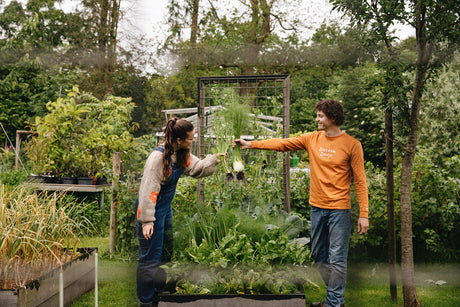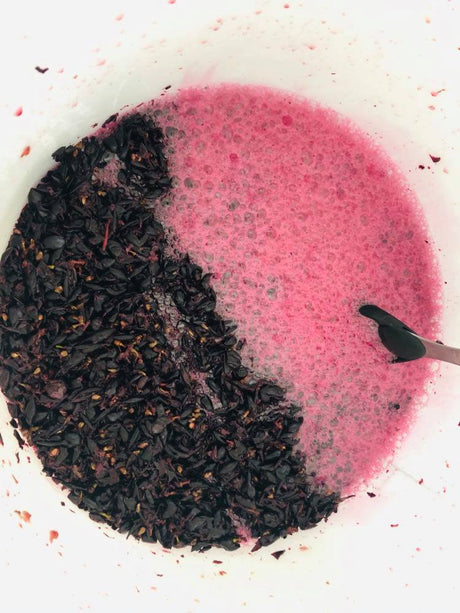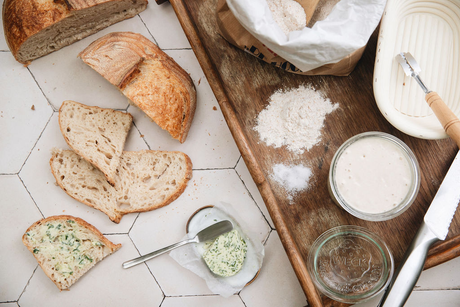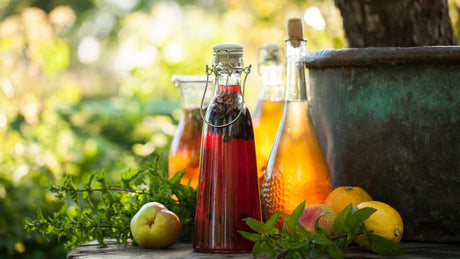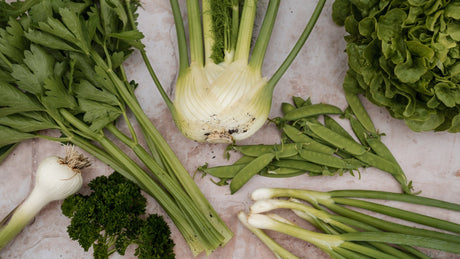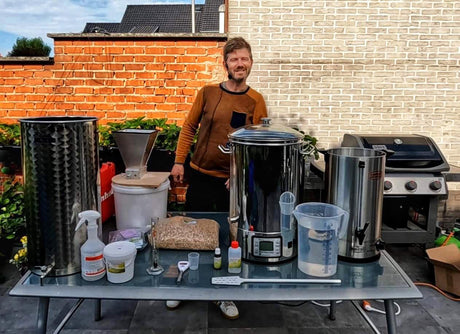How to store your home-grown fruits and vegetables properly so you can enjoy them in the winter too
Now that you’ve grown and harvested some beautiful fresh vegetables from your garden, how do you store them? It used to be easy: in the cellar. But these days, not everyone has a cellar. Here are other ways to store your harvest so that your homegrown fruits and vegetables are ready to make it through the winter months.
In Great Grandma’s time, most homes had a cellar or a cold storage area somewhere in the house. Today’s modern homes don’t have that feature. So how do you store crops like squash , beets, carrots, onions, sweet potatoes, and cabbage that were traditionally stored in a cellar?
Alternatives to a basement
- Is there a room in your house that stays below 15°C but above freezing?
- Do you have a cupboard on an outside wall?
- Can you close off the coolest corner of the basement or attic?
- Do you have an unheated hallway?
- Have you considered using a cool bag or a clean metal garbage can with insulation (e.g. straw) in an unheated garage or shed?
Storing different vegetables
Different fruits and vegetables require different temperatures and humidity levels to store well. There are four basic groups:
Group 1: Cold and damp
These root vegetables like it cold, 0 to 4.5°C, and need very humid conditions (90% humidity). They can be stored in a basement or perhaps a garage, but then they should be covered with a layer of packing material such as sand or peat moss. This material should then be kept moist (not wet!). You can use a spray bottle to add moisture as needed.
- Harvest root crops before temperatures drop below -4°C, brush off loose soil (do not wash), cut the tops to 1cm and leave the roots intact.
- Store beets, carrots , turnips, radishes and kohlrabi in moist sand or sawdust so that they do not touch each other.
- Celery keeps best if it is pulled up by the roots and stored upright with the roots in moist sand.

Group 2: Cold and dry
Cold but drier, 0 to 4.5°C and 60 to 70% humidity.
- Apples, pears, cabbage, Brussels sprouts and potatoes can be stored in the same place as root vegetables, as long as they get extra air circulation to keep them drier.
- For apples and pears: Many gardeners recommend wrapping each fruit in newspaper to help extend their shelf life and prevent rot from spreading.
- Cabbage and Brussels sprouts can be dug up and replanted in a bucket or bag of moist soil.
- Potatoes need darkness and a place closer to 4.5°C.
- Store the apples in their own container, as they give off ethylene gas and also absorb strong flavors such as cabbage.
Group 3: Cool and dry
Cool, 0° to 10°C, and dry (less than 60% humidity).
- Onions, garlic and shallots are best stored in a dry, unheated room or cupboard.
- Before storing them, dry them in an airy place for about two weeks before braiding or hanging them in mesh bags.
- They can also be stored in shallow boxes or baskets no more than two layers deep. Peat boxes are ideal for this.

Group 4: Slightly warmer and dry
Slightly warmer, 10 to 15°C, and dry (60% humidity).
- Sweet potatoes, pumpkins and winter squash need slightly warmer conditions to maintain their texture, so they can be stored in a dry cellar or cupboard in the house, below room temperature.
- Pumpkins and sweet potatoes should be pickled before storing. For pumpkins, leave the stems intact and let them cure (=harden off) for two weeks to dry and harden the skin before storing. Sweet potatoes should be cured at a high temperature (at least 21°C) for 5-10 days before storing and do not let them get below 10°C during storage.
- Both will last longer if they are not stacked too much and have good air circulation.
Other options for preserving your harvest
- Refrigerator: Storing in the refrigerator is a great option for produce that needs to be cold and moist or cold and dry. Check out our article on keeping produce fresh to learn which fruits and vegetables are best stored in the refrigerator and which are better stored elsewhere.
- Leave in the ground: Until the ground freezes, you can simply store crops such as beets, carrots, turnips, potatoes and radishes in their own garden bed. Cover them with a generous amount of hay or straw. They can then be dug up when necessary or until the ground freezes. By the way, it is best to harvest sweet potatoes just before the first frost, the tubers only thicken when the days are short. Some vegetables can also be harvested during the winter, such as: Brussels sprouts, parsnips , carrots, kale , lamb's lettuce and leeks .
- Extend the season: Use cold frames, fleece or your garden shed/ conservatory to keep your vegetables growing for at least a few more weeks.
- Plant your vegetables in a pit: Instead of using a cellar, you can also bury your vegetables in holes in the hard ground. Use this to store cabbage, potatoes and other root vegetables. Make a deep hole, cover the edge with cardboard and a thick layer of straw. Place your vegetables in this. Cover again with straw and then soil to keep the frost out. Then cover with more straw (and if necessary, mark where your hole is so you can easily find your vegetables :) )
Check your harvest regularly
Check your harvest regularly to see if storage is going well.
You can’t just harvest, store and forget about your vegetable supply. Check your stored produce regularly and remove anything that starts to spoil. If you don’t, the rot will spread to the rest. This year I had stored corn on the cob in the fridge. I forgot about it and it wasn’t until I saw the box that the damage was done: my entire crop of sweet corn on the cob had gone moldy. What a shame!
Consider canning or preserving
We've written a complete canning guide to help you get more out of your garden. Check out our canning , freezing and pickling guides on our website. You'll also find free crop sheets with harvesting and storage tips.
This way you can ensure that you can enjoy your own grown vegetables and fruit even in winter!
Free online crop records
On our website you will find an overview with information about sowing, planting, harvesting and storing per crop. View the free crop sheets here .


